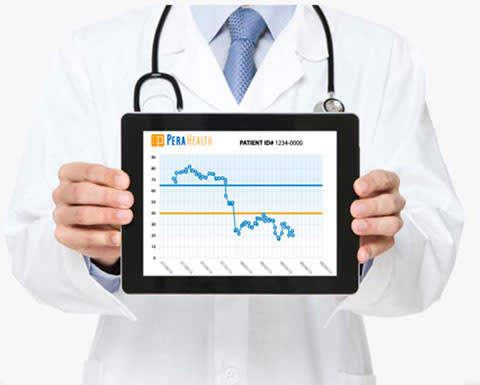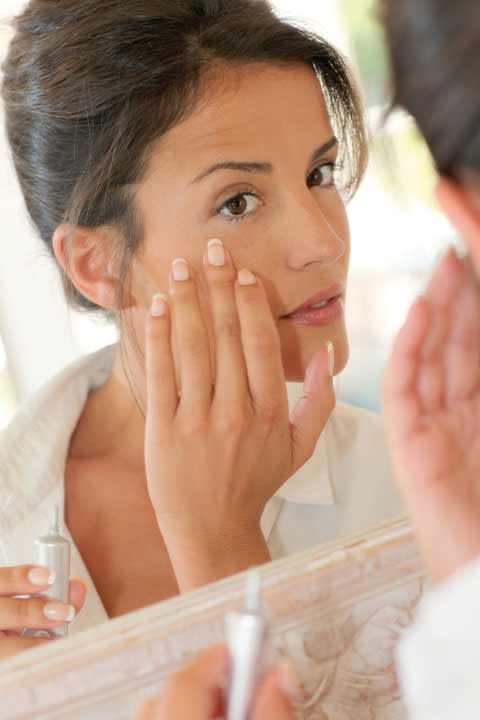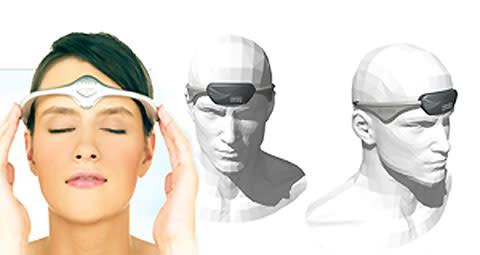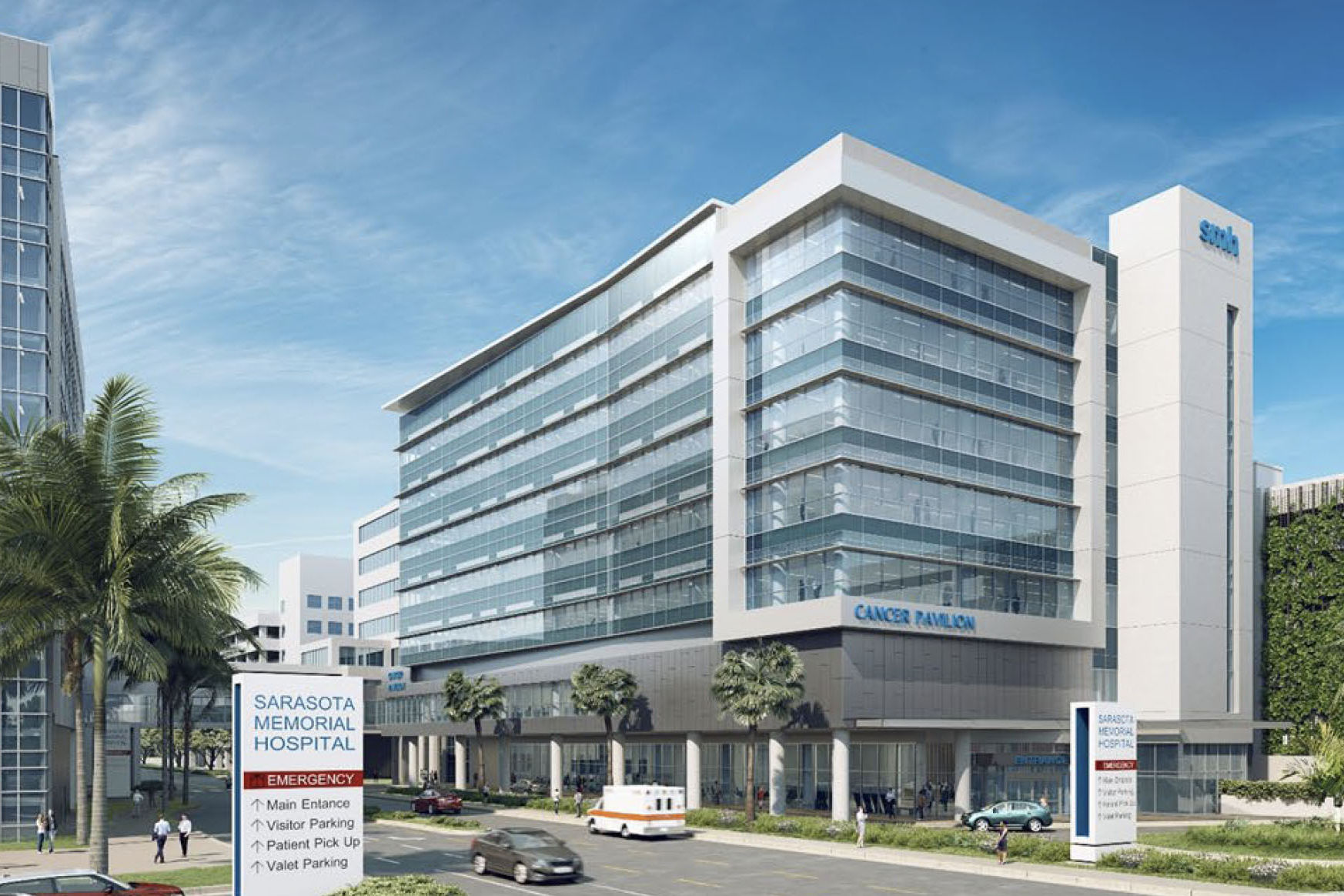Sarasota Health News Roundup: Alzheimer's, Hair Loss, Aging and More

Will I Get Cancer?
For some of us, genetic testing can hold the answer.
In May 2013, Angelina Jolie took a genetic test that identified an abnormality in her BRCA1 gene, which put her at great risk for developing breast cancer. Soon thereafter, the famed Hollywood beauty had a preventive double mastectomy, and genetic testing emerged into the national spotlight.
But a single celebrity experience doesn’t tell the whole story, and it’s important to do your research in order to maximize the power of genetic testing.
“A lot of people rushed to get BRC testing after Angelina Jolie,” says Cathy McCann, who coordinates Sarasota Memorial Hospital’s genetic education program. “So a lot of people then thought they were out of the woods, but those weren’t necessarily the genes [they needed to test].” Unless you’re related to Angelina Jolie, you need further medical consultation to determine what tests, if any, would reveal your risks for cancer.
Not everyone who gets cancer has inherited it genetically, of course. But a genetic predisposition can mean that you’re likely to get certain types of cancer at a much younger age than that cancer normally appears in the rest of the population. “Breast cancer in a 70-year-old, that’s [not unusual]. But a 40-year-old, there’s something wrong with that,” says McCann. “A 35-year-old man with colon cancer, that’s not typical.”
The National Cancer Institute estimates that 12 percent of women will develop breast cancer at some point in their lives. But those with abnormalities in their BRCA gene may face a risk as high as 87 percent.
The first thing a genetics expert will do is take a detailed family history, identifying “all the cancers in the family, and their ages of onset, to see if there’s some kind of pattern,” says McCann. Multiple first-degree relatives with certain types of cancers might indicate a predisposition. “Stomach, uterine and colon cancers can all be related to each other through the same gene system,” she explains.
The appearance of other cancers through multiple generations, like male breast cancer, can also point to the need for testing.
Still, when it comes to cancer, genetic testing, while powerful, is only one tool in our arsenal—and it might not be the one you need.
“People should know that only 5 to 10 percent of cancers are hereditary. Everybody doesn’t need to run out and get genetic testing,” says McCann. “Still, sometimes people overestimate what their risk is, and [tests will show] they really are at no greater risk than someone else in the population. If they do have a higher risk, we can talk to them about preventive strategies.”

“Stomach, uterine and colon cancers can all be related to each other through the same gene system.”
TYPES OF GENETIC TESTS
Diagnostic testing When a person has symptoms that suggest a genetic disease, such as Down syndrome or muscular dystrophy, specific tests can confirm those diseases.
Predictive testing can show which people have a higher chance of getting a disease before symptoms appear. Someone with an inherited genetic risk factor may have an increased chance of getting a disease, although this does not mean that the person will certainly get the disease.
Presymptomatic is a type of predictive testing that can indicate which family members are at risk for a certain genetic condition already known to be present in their family but who do not yet show symptoms of that disease.
Preconception/Carrier testing can tell individuals if they carry a gene alteration for a type of inherited disorder (autosomal recessive disorder). These carriers will not get the disease, but might pass the genetic alteration to their children. If both parents are carriers, their children might inherit an alteration from each parent and get the disease.
Prenatal testing is available to pregnant women for common inherited disorders and other genetic conditions for which their child may be at risk.
SOURCE: genome.gov
Diseases and DNA
Genes hold the instructions for making the body’s proteins, which perform myriad tasks at a cellular level throughout the body. A mutation changes how the gene makes a certain protein; when that protein doesn't function properly, genetic disorders arise.
Scientists are rapidly increasing their ability to pinpoint genes that are associated with certain diseases. More than 2,000 different genetic tests have already been developed; they analyze an individual’s DNA to see if certain mutations are present, either to diagnose a condition or better predict the likelihood of developing it. Our illustration shows some diseases with identifiable genetic markers that DNA testing can now reveal.
Huntington’s disease Caused by a mutation of a dominant gene; each child of a parent with HD has a 50 percent chance of inheriting that mutation.
Thyroid cancer RET proto-oncogene mutations increase risk.
Cystic fibrosis Children who inherit one faulty CFTR gene from each parent will have cystic fibrosis.
Breast cancer Abnormal BRCA1, BRCA2, and PALB2 genes may account for up to 10 percent of all breast cancers.
Spina Bifida While scientists are still working to pinpoint the genes responsible, prenatal screening tests look for a certain protein indicating a high risk.
Sickle cell anemia The most common inherited blood disorder in the U.S. is caused by the hemoglobin-Beta gene on chromosome 11.
Colon cancer 3 percent of cases are inherited due to Lynch syndrome, which is linked to a faulty gene.
2,000+
genetic tests are available to detect gene variants associated with particular conditions.

“If anybody doesn’t give money to this wonderful organization, I can still put five bullets into the red circle.” --Dr. Ruth Westheimer, 86, former sniper with the Israeli Haganah, at this year’s Women’s Resource Center Renaissance luncheon
MASTER OF SEX
A candid conversation with Dr. Ruth.
Speaking to the 400-plus people at this year’s Women’s Resource Center Renaissance Luncheon, renowned psychosexual therapist Dr. Ruth Westheimer discussed the nation’s wealth of medical research and knowledge, and the need for it to continue.
“It is very important to state that things have changed,” she said of sexual literacy in society. “We are better off. But we still need more research.”
While Westheimer still discusses matters like pregnancy prevention and sexually transmitted diseases, for Sarasota’s traditionally older population, she emphasized the importance of staying active and social, whether it’s starting a new relationship or simply volunteering for your favorite cause. “For some people, the importance is to take the risk,” she said. “Who knows, you might meet someone.”
It’s an approach the 86-year-old Westheimer practices firsthand as she continues her teaching career at Columbia University. It’s her interactions with her students, she says, that fuel her passion. Her latest book is Dr. Ruth’s Myths of Love, although she’s also written a guide for Alzheimer’s caregivers. In fact, her expertise extends beyond sex into many elements of human behavior, although she’s happy that people can ask her questions—which, she says, is how she continues to learn.
It’s hard to argue with the famously diminutive spitfire, who deserves a good deal of credit for people’s continued improvement in speaking frankly about sexual matters.
“I have an obligation to give back to society. One and a half million Jewish children were killed [in the Holocaust], and I’m alive,” she said, then added with a laugh: “That the obligation would be to talk about erections, I did not know.”

Alzheimer’s Alert
A Sarasota expert on how you can reduce your risk of Alzheimer’s disease.
By Ilene Denton
No drug currently on the market can significantly reduce your risk of getting Alzheimer’s disease. But if you follow four sensible lifestyle changes, says Dr. Michael Mullan, CEO of the Sarasota-based nonprofit Roskamp Institute and director of its Memory Disorder Clinic, you can reduce your risk by half.
Mullan, who has devoted his medical career to research on understanding the causes and future treatments for Alzheimer’s disease, estimates that around 5 million U.S. residents, both diagnosed and undiagnosed, currently suffer from it. And that number is expected to climb as the baby boomer generation ages.
But Alzheimer’s disease is not inevitable, he says. “We can personally take control for our risk for this disease.”
Here’s how.
Physical exercise. People who practice regular exercise “of sufficient challenge” have a lower associated risk of Alzheimer’s disease and other dementias, says Mullan. How does he define sufficient challenge? Something that raises the heart rate to a moderate level for 30 minutes or so a day. “You don’t have to become an Olympic athlete,” he says, “but the more you do, the more benefit you get.” Why? Exercise increases both the vascularity of the brain and the growth of the connection between neurons in the brain.
Diet. For reasons that are still unknown, a Mediterranean-type diet—lots of vegetables, fruit, olive oil and small amounts of red wine—can reduce your risk for Alzheimer’s disease and even reduce the risk of going from mild cognitive impairment to Alzheimer’s disease over a five- or 10-year period. “I don’t believe the Mediterranean diet is necessarily the best one out there, but it’s certainly the one that’s been best researched,” says Mullan. “And the results are clear.”
Mental exercise. The more we use our brains, and the more challenging our work, the better connections we’ll develop between neurons. “Data suggests that people with active social lives, who play bridge, go to the theater or to lectures, are associated with a reduced risk of Alzheimer’s disease,” he says. “Different parts of the brain actually become physically larger the more we use them.” And challenge yourself with lots of different things, so there’s more cognitive reserve if something happens to one part of your brain.
Medical conditions. Uncontrolled diabetes, hypertension, arrhythmias and other medical conditions can profoundly affect our risk of getting Alzheimer’s disease, “multiplying it by as much as four times,” says Mullan. “And if you have several of those things, the risk goes even higher.” The good news is that all those conditions are eminently treatable these days. “No one should be walking around with uncontrolled blood sugars. Get a check-up once a year and look for these common conditions,” says Mullan.
Vital Signs
Local health, by the numbers.
Sarasota-Manatee population (2013): 723,422
Ages
18-64:
53%
OVER 65:
28%
Births in 2013: 4,805
Top three causes of death
FLORIDA:
Heart diseases
Cancer
Chronic lower respiratory disease
U.S.:
Cancer
Heart diseases
Stroke
Percentage of adults in Sarasota who -
Are in good to excellent health: 88% [ 83% in Florida, 90% in U.S.]
Are overweight or obese: 57% [65% in Florida, 69% in U.S.]
Get no leisure-time physical activity: 21% [26% in Florida, 32% in U.S.]
Have High Cholesterol: 41% [39% in Florida, 33% in U.S.]
Have diabetes: 9% [10% in Florida, 9% in U.S.]
Are smokers: 19% [17% in Florida, 18% in U.S.]

New approaches to old problems
Mapping Patients’ health
Problem: Medical records software doesn’t reveal progress/regression in hospital patients under the care of multiple doctors, nurses and hospitalists.
Solution: The Florence A. Rothman Index
How it works: Developed by Sarasota resident and former MIT think tank consultant Steve Rothman in honor of his late mother, the Rothman Index integrates with medical records software to access more than 50 indicators of a patient’s health, then uses that information to generate a basic line graph, which allows new health care providers to see quickly if the patient’s health has been improving or deteriorating over a period of time. The software is already being used at a number of nationally prominent hospitals and is now being marketed to assisted-living and senior-living communities.

Skin protection through probiotics
Problem: Caustic skincare products disrupt the body’s natural microbiome, causing irritation, inflammation, dryness and other issues.
Solution: BioEsse Probiotic Essence for the Skin
How it works: Similar to probiotics for healthy digestive tracts, BioEsse has been developed to maintain the skin’s health-promoting bacteria (part of the body’s microbiome) while eliminating harmful bacteria and other irritants that can cause redness, dryness and other visible signs of unhealthy skin. Developed by Sarasota-based Quorum Innovations, BioEsse is newly available to the public this fall through mybioesse.com.

Diagnostic device
Problem: Incorrect and late diagnoses from inconsistent, incomplete or nonexistent medical exams.
Solution: BioscanR
How it works: A finalist in the $10 million Qualcomm Tricorder XPRIZE competition to revolutionize diagnostic technologies, the wearable BioscanR by Sarasota-based Intention Technology allows for easy monitoring of vital signs throughout the day, all from home. The device, which is still in development, uses predictive algorithms to diagnose any of 15 different diseases, including pneumonia and coronary artery disease. The BioscanR can then provide a snapshot of the patient’s current health status to his or her doctor.

Hair to Stay
A Sarasota doctor pioneers promising treatments for hair loss.
A 52-year-old woman, brushing her long hair, sees handfuls of individual strands loose in the brush. For all her life, she’s washed, brushed and styled her hair daily. It’s been the source of compliments and a primary focus in her sense of personal beauty. And suddenly, it’s falling out in clumps. Soon there are visible bald spots, noticeable to friends and family—and strangers on the street, who stare. Her confidence about her looks has turned into fear and embarrassment.
Hair loss represents a legitimate psychological crisis for many people—especially women, whose hair is tied closely to how they and others assess their looks. (Male-pattern baldness, while upsetting for many men, is common enough to have gained some measure of acceptance.)
Fortunately, physicians have for decades fought to understand, delay and reverse hair loss. And now, a local physician is leading the fight.
In a sunlit, seventh-floor office overlooking downtown Sarasota, internationally significant hair-restoration breakthroughs are taking place. Sarasota’s Greco Hair Restoration headquarters is equal parts treatment clinic, research center and state-of-the-art product development lab.
Dr. Joseph Greco, the clinic’s co-founder and a well-known lecturer and researcher, is a middle member of three generations of hair-loss specialists. (He and two brothers followed in their physician father’s footsteps, and his son is now a dermatologic surgeon at UCLA.) In addition to using a menu of FDA-approved treatment options ranging from transplant surgery to Rogaine foam, Greco has pioneered a type of hair-restoration treatment that combines PRP (platelet-rich plasma) with CRP (cytokine-rich plasma), both derived from the patient’s own blood, using the body’s own cells to stimulate growth. Greco’s biotech company developed the process for harvesting CRP, which is even richer in growth factors than PRP. Greco has referred to it as “liquid gold”—for both its purity and its yellowish color. Greco, who’s also on the staff of the University of Paris and whose work has been featured in Vogue, regularly draws patients to Sarasota from around the world.
It’s normal to lose up to about 100 hairs a day, says Greco. But on a healthy scalp, the body negates that loss by growing new hair. Follicles on your scalp are actively growing hair for anywhere from two to six or seven years. At any given time, around 80 percent of the hairs on your head are—or should be—in this growing phase. Then they go into a “resting” phase.
What we call “hair loss”—the noticeable absence of hair—may be caused by something interfering with that active stage of growth. The hair may not be growing back quickly, or at all, or the follicle may be producing thinner, more delicate hair that looks sparse. Or if the growth phase is cut short, the hair will only grow a certain length and will eventually fall out sooner. The cause of that regrowth interference dictates what treatments will be effective—and which ones will be expensive, ineffective mistakes.
In other words, hair restoration is not one-size-fits-all medicine. “If you come in [to a hair restoration clinic] and everyone is pointed in one direction [for treatment], you should run,” says Greco.
The first step of any treatment plan should be a thorough patient profile. Genetics, diet, disease, trauma, lifestyle, these can all cause hair loss. Biopsies and blood tests might be needed to confirm or rule out some causes. Some conditions are permanent, but others are temporary or may be reversible with changes in nutrition or simple, noninvasive medical intervention. It all depends on you.
Some conditions are permanent, but others are temporary or may be reversible with changes in nutrition or simple, noninvasive medical intervention.
But PRP/CRP treatments can be used in a variety of situations, and their benefit is threefold: They can be highly effective on their own; they can be paired with other treatments, like transplant surgery, to aid in healing and effectiveness; and they use your body’s own cells, so there are no rejection or medical complications. The treatments are administered through tiny injections on the scalp; depending on the condition, the effectiveness may peak around six months, at which point another treatment can continue the effects.
In fact, you may recognize PRP from other applications: It’s already used to stimulate healing in multiple areas of medicine, perhaps most noticeably for athletes with orthopedic injuries.
“Regenerative medicine is the safest, most versatile treatment,” says Greco. “We’ve done 4,000 treatments in 30 countries and seen no adverse side effects.”
The advantage of combining PRP with CRP is how the two formulas work together: PRP has a “time-release” effect, but CRP triggers immediate growth. The result is something you can both see quickly and count on to continue for a long and healthy growing cycle.
In hair restoration, these protein-rich formulas work in a number of ways—by increasing blood flow, encouraging healing, reducing inflammation and, perhaps most important of all, by triggering the growing phase of the follicle.
Take, for instance, traditional transplant surgery: At first, PRP was used after surgery to aid in healing. Then they began to culture the grafts in the patient’s own cells, prior to implanting them. Now, PRP is injected prior to surgery to get the growing phase started even before the grafts are there.
Greco also stresses that the effectiveness of PRP can vary widely because the process of deriving the formula from the blood varies, depending on who’s doing the procedure. How rich the platelet-rich plasma really is depends on the centrifuge and the scientists who are using it.
As technology improves, the formulas get richer and richer. Greco’s biotech company has now patented a process for freeze-drying your body’s platelets, creating an exponentially richer formula in the form of a sort of powder. Research has also shown that, in certain kinds of hair loss, these treatments actually “turn on” stem cells in the scalp; the PRP/CRP growth factors are reviving otherwise dormant follicle stem cells.
These increasingly effective treatments are allowing both men and women to feel there is hope for their disappearing hair. “We get a lot of referrals from hair stylists,” says Greco. But he reiterates that all prospective hair restoration patients should go to someone who specializes in hair in general, rather than someone who specializes in a single type of treatment. “If you don’t treat the root of the problem, nothing works,” he says.



